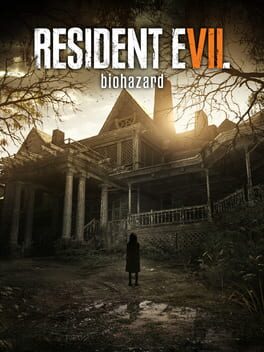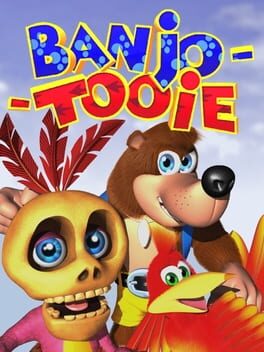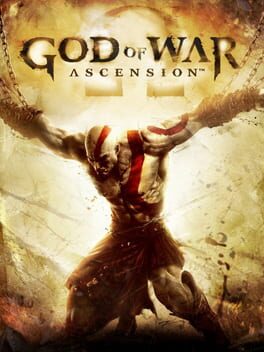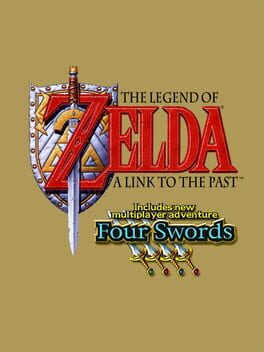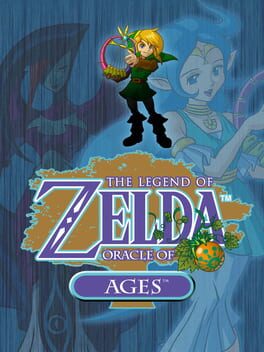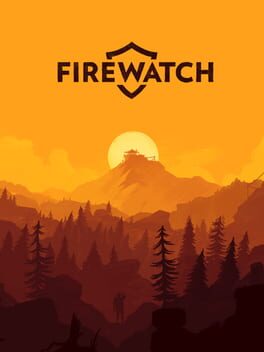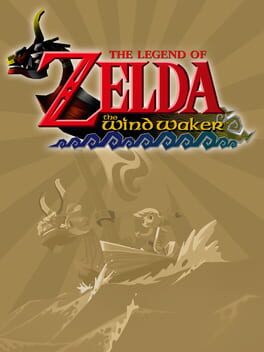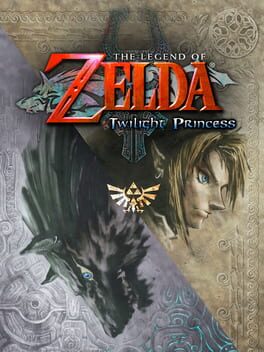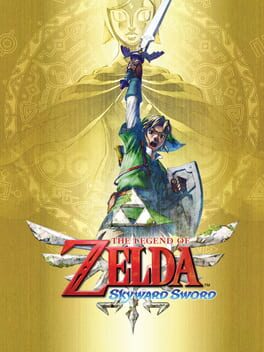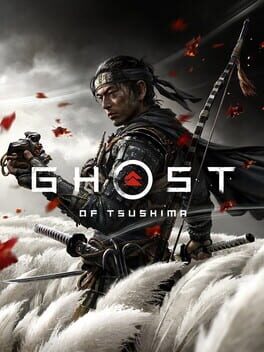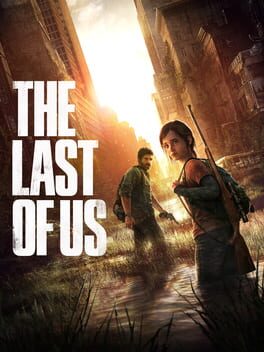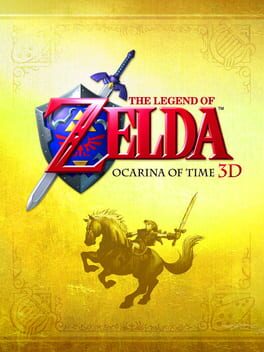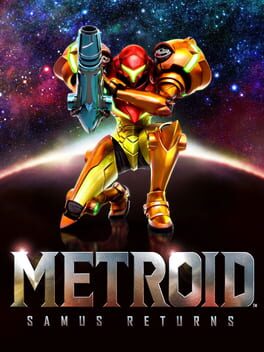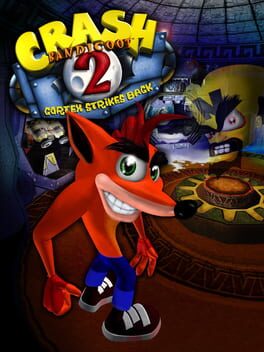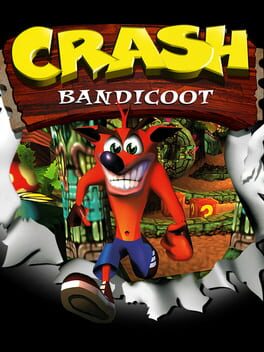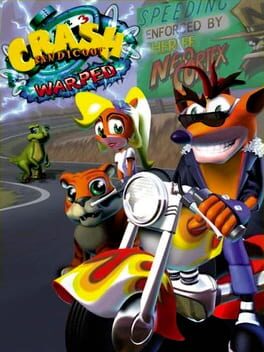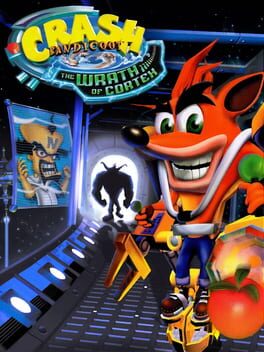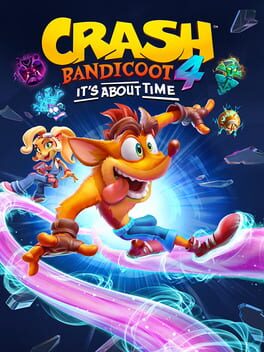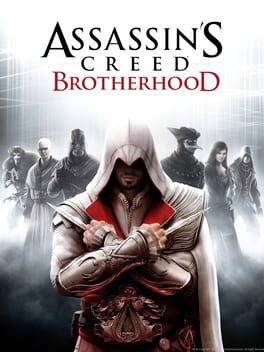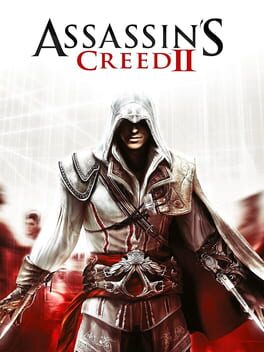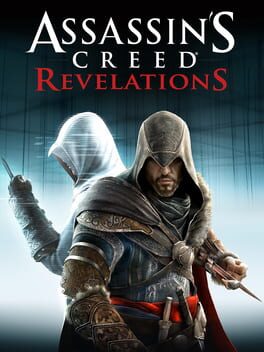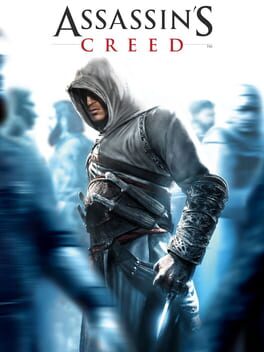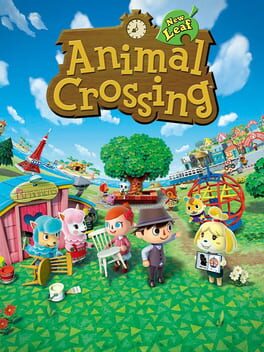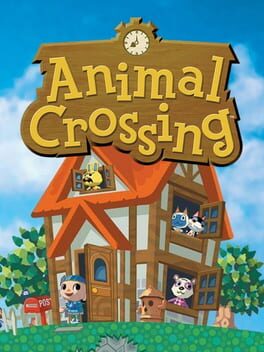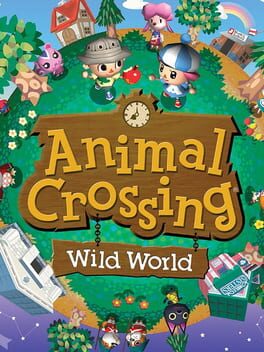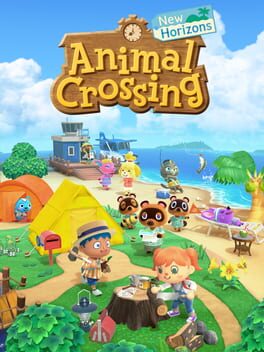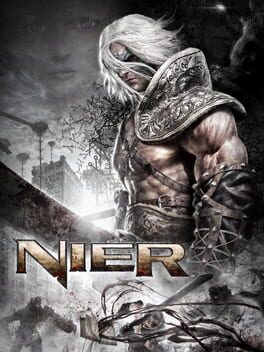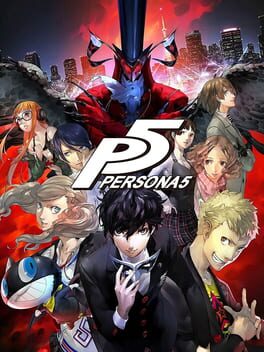Maurith
1477 reviews liked by Maurith
Resident Evil 7 is such a baffling game to me. It's a game that manages to be the best Resident Evil of the modern era in some respects while also the worst modern Resident Evil in others. Whenever I think about this game and its imperfections, I always find myself with a lot more to say about it than I think I did, so I decided to replay this game and it's DLC to finally be able to get it all out in words.
If you looked at just the gameplay and presentation of RE7 you would see nothing really wrong with this game. RE7 was the first RE game to shift to a first-person perspective and I think it works surprisingly well to the point that the third person perspective hardly feels like a series staple anymore. This first-person perspective also adds to the horror element of this game, which when paired with the setting adds up to make one of the scariest RE games I've played. The setting of the Bakers secluded and condemned Louisiana estate is a really good one, each area in the estate matches to one of the Baker family and they all have a different brand of horror to go with them, making each of these main sections feel unique and interesting. The puzzles, combat, and resource management gameplay are all really good here as well and what you'd expect from an RE game. The game is also just really good looking. The way the environments are crafted both visually and in terms of details just feels so real and that adds to the eeriness of the game as a whole.
So if the gameplay, setting, horror, and the presentation of the game are this good what's holding it back you may ask? Well, that'd be the story dear reader, the story is a fucking mess. To give it one thing, the basic plot setup and the way the game starts off. Ethan, being a normal guy who gets dragged into all the game's madness because he's looking for his wife is a good setup and the motivation for him to stay and try to save her is believable. It's in the unbelievablly stupid twists the game takes and the lackluster explanations of whats going on here that this game falters. This is where I get into spoiler territory so if you want to read on just press this link (https://pastebin.com/BhaFdRAE) and it'll take you into the rest of the story section.
The last thing I want to talk about is the DLC. I hadn't played the DLC prior to this playthrough, making it some of the only modern RE content I haven't touched yet and now that I've played it I can say it's alright. Starting off with the Banned Footage, which is where the main meat of this DLC comes from, I'd say this is pretty good. This shows the story of Clancy, another one of the Bakers victims that has to endure and survive their gauntlet of challenges. The Nightmare tape sees you surviving a hoard of nearly endless molded enemies as you try to survive until dawn in a sort of tower defense like mode, the Bedroom tape is an escape room of sorts where you have to use the items and clues available to you in the room all the while avoiding making a lot of noise to avoid attracting Margurite to the room and making sure to put everything back where you found it before she comes back each time otherwise she'll realise you're trying to escape, and the 21 tape sees you playing a few sadistic rounds of blackjack against another victim in Lucas' warehouse, the winner of which is allowed to go free and the loser of which is killed gruesomely. These are all pretty fun ideas that don't outstay their welcome for the most part and are neat little additions. The fourth Banned Footage tape works as a prolouge to the main story thatb shows us from Zoe's eyes the day that things went to shit, showing how Eveline corrupted the Bakers with her gift and how Zoe manages to escape meeting the same fate as the rest of her family, even if she can't leave the estate. There's also two other DLCs that serve as epilouges in "Not a Hero" and "End of Zoe", Not a Hero focuses on Chris Redfield going after Lucas Baker who turns out was much more evil than the game initially showed and is related to the Umbrella corporation, this mode is just a really short epilouge with basic RE gameplay that only really serves to tie the events of this game into the main RE story. End of Zoe focuses on Uncle Joe Baker finding Zoe in a crystalized state and searching for a cure for her all while a swampy version of Jack Baker follows him, the mode has you using Joe's bare fists and brute strength as weapons rather than guns and feels pretty fun and satisfying in that way, it's also nice to see Zoe's story get concluded so satisfyingly and brings closure to the events of the main game as a whole. Overall I'd say this DLC is mostly worth it, it's not a lot to write home about but it's something and if you get it on sale it'll provide you with a few more hours of entertainment if you liked the base game.
Despite its glaring story flaws that hold it back from greatness, Resident Evil 7 is still a really fun game and a good return to form as well as innovation for the RE series. The excellent gameplay, setting, and horror elements add up to what I believe to be the most genuinely scary Resident Evil
game and without it being made and returning the series to it's roots I probably wouldn't be such a big RE fan today.
If you looked at just the gameplay and presentation of RE7 you would see nothing really wrong with this game. RE7 was the first RE game to shift to a first-person perspective and I think it works surprisingly well to the point that the third person perspective hardly feels like a series staple anymore. This first-person perspective also adds to the horror element of this game, which when paired with the setting adds up to make one of the scariest RE games I've played. The setting of the Bakers secluded and condemned Louisiana estate is a really good one, each area in the estate matches to one of the Baker family and they all have a different brand of horror to go with them, making each of these main sections feel unique and interesting. The puzzles, combat, and resource management gameplay are all really good here as well and what you'd expect from an RE game. The game is also just really good looking. The way the environments are crafted both visually and in terms of details just feels so real and that adds to the eeriness of the game as a whole.
So if the gameplay, setting, horror, and the presentation of the game are this good what's holding it back you may ask? Well, that'd be the story dear reader, the story is a fucking mess. To give it one thing, the basic plot setup and the way the game starts off. Ethan, being a normal guy who gets dragged into all the game's madness because he's looking for his wife is a good setup and the motivation for him to stay and try to save her is believable. It's in the unbelievablly stupid twists the game takes and the lackluster explanations of whats going on here that this game falters. This is where I get into spoiler territory so if you want to read on just press this link (https://pastebin.com/BhaFdRAE) and it'll take you into the rest of the story section.
The last thing I want to talk about is the DLC. I hadn't played the DLC prior to this playthrough, making it some of the only modern RE content I haven't touched yet and now that I've played it I can say it's alright. Starting off with the Banned Footage, which is where the main meat of this DLC comes from, I'd say this is pretty good. This shows the story of Clancy, another one of the Bakers victims that has to endure and survive their gauntlet of challenges. The Nightmare tape sees you surviving a hoard of nearly endless molded enemies as you try to survive until dawn in a sort of tower defense like mode, the Bedroom tape is an escape room of sorts where you have to use the items and clues available to you in the room all the while avoiding making a lot of noise to avoid attracting Margurite to the room and making sure to put everything back where you found it before she comes back each time otherwise she'll realise you're trying to escape, and the 21 tape sees you playing a few sadistic rounds of blackjack against another victim in Lucas' warehouse, the winner of which is allowed to go free and the loser of which is killed gruesomely. These are all pretty fun ideas that don't outstay their welcome for the most part and are neat little additions. The fourth Banned Footage tape works as a prolouge to the main story thatb shows us from Zoe's eyes the day that things went to shit, showing how Eveline corrupted the Bakers with her gift and how Zoe manages to escape meeting the same fate as the rest of her family, even if she can't leave the estate. There's also two other DLCs that serve as epilouges in "Not a Hero" and "End of Zoe", Not a Hero focuses on Chris Redfield going after Lucas Baker who turns out was much more evil than the game initially showed and is related to the Umbrella corporation, this mode is just a really short epilouge with basic RE gameplay that only really serves to tie the events of this game into the main RE story. End of Zoe focuses on Uncle Joe Baker finding Zoe in a crystalized state and searching for a cure for her all while a swampy version of Jack Baker follows him, the mode has you using Joe's bare fists and brute strength as weapons rather than guns and feels pretty fun and satisfying in that way, it's also nice to see Zoe's story get concluded so satisfyingly and brings closure to the events of the main game as a whole. Overall I'd say this DLC is mostly worth it, it's not a lot to write home about but it's something and if you get it on sale it'll provide you with a few more hours of entertainment if you liked the base game.
Despite its glaring story flaws that hold it back from greatness, Resident Evil 7 is still a really fun game and a good return to form as well as innovation for the RE series. The excellent gameplay, setting, and horror elements add up to what I believe to be the most genuinely scary Resident Evil
game and without it being made and returning the series to it's roots I probably wouldn't be such a big RE fan today.
Super Castlevania IV
1991
It's fine.
When folks decry Super for being a blasphemous take on the tried-and-true formula of Classicvania with it's eight-directional whipping, they're absolutely justified in their thought. It takes away the strategical element that made us love the thinking person's aspect behind the careful movement. An entire sub-system becomes a complete afterthought, with them only being convenient at hyper-specific instances rather than something that was there to truly compliment our whipping prowess to help with entire courses and encounters. Taking a death becomes less threatening as losing a sub-weapon essentially turns into a very minor slap on the wrist at worst, as an empty sub-weapon box may as well had been what it felt like the entire time we had been playing.
It's an ordeal that can't be simply ignored in a self-imposed challenge like the charged mega buster in every NES era Mega Man past the third game, and you're left with Simon being able to skillfully twirl his whip better than any other Belmont before or after him. Perhaps Simon was always meant to be presented as the most headstrong and bullish of the family? Characterization through mechanics? It remains to be seen if that was the intent, or if it was supposed to be an "evolution". An evolution that no doubt would've made this entry an even bigger target of contempt, especially if the stage design would continue to fail to compliment the new system beyond smattering a few bats flying down from odd angles, and if we could still easily thwart Axe Armors from below the floor they're standing on. Luckily for all of us however, this would be the only time such a new take would be used, and instead of being a deplorable turning point for the series, it is in fact unique and now it's own experience.
A retelling of the original that shows Simon's entire journey from beyond Devil's Castle, braving the horrors that crept from the onset of the horrid manifestation of Dracula's power within what was once a peaceful forest accompanied by strings of a violin within a purple and grey console. A walk through the caves with beautiful woodwind arrangements, and mesmerizing illusions brought upon by the seventh mode conjured by unknown forces presumably under the control of the dark lord himself. The approach to familiar scenery from the beginning of our original story of the legendary quest partnered by intimidating percussion for nightmares to come. We make our way through the retold portions of Simon's tale, and upon completion hear echoes of our past one last time before we must move on to beginnings of a new generation. The slow haunting keys of an organ cue the entry of Dracula to the main stage. Simon's Theme of which signaled the entrance of the hero at the very start, returns once again at the final moment the Count is nearing his defeat to build the audience's tension to the epic conclusion of the adventure. The orchestra plays to the agonizing death of the villain, and rings in daylight's victory over the darkness.
The fabled saga, retold and reimagined with added flare of chilling drama and suspense. Not to replace the original, but to remember it through a more cinematic lens. Forever immortal.
When folks decry Super for being a blasphemous take on the tried-and-true formula of Classicvania with it's eight-directional whipping, they're absolutely justified in their thought. It takes away the strategical element that made us love the thinking person's aspect behind the careful movement. An entire sub-system becomes a complete afterthought, with them only being convenient at hyper-specific instances rather than something that was there to truly compliment our whipping prowess to help with entire courses and encounters. Taking a death becomes less threatening as losing a sub-weapon essentially turns into a very minor slap on the wrist at worst, as an empty sub-weapon box may as well had been what it felt like the entire time we had been playing.
It's an ordeal that can't be simply ignored in a self-imposed challenge like the charged mega buster in every NES era Mega Man past the third game, and you're left with Simon being able to skillfully twirl his whip better than any other Belmont before or after him. Perhaps Simon was always meant to be presented as the most headstrong and bullish of the family? Characterization through mechanics? It remains to be seen if that was the intent, or if it was supposed to be an "evolution". An evolution that no doubt would've made this entry an even bigger target of contempt, especially if the stage design would continue to fail to compliment the new system beyond smattering a few bats flying down from odd angles, and if we could still easily thwart Axe Armors from below the floor they're standing on. Luckily for all of us however, this would be the only time such a new take would be used, and instead of being a deplorable turning point for the series, it is in fact unique and now it's own experience.
A retelling of the original that shows Simon's entire journey from beyond Devil's Castle, braving the horrors that crept from the onset of the horrid manifestation of Dracula's power within what was once a peaceful forest accompanied by strings of a violin within a purple and grey console. A walk through the caves with beautiful woodwind arrangements, and mesmerizing illusions brought upon by the seventh mode conjured by unknown forces presumably under the control of the dark lord himself. The approach to familiar scenery from the beginning of our original story of the legendary quest partnered by intimidating percussion for nightmares to come. We make our way through the retold portions of Simon's tale, and upon completion hear echoes of our past one last time before we must move on to beginnings of a new generation. The slow haunting keys of an organ cue the entry of Dracula to the main stage. Simon's Theme of which signaled the entrance of the hero at the very start, returns once again at the final moment the Count is nearing his defeat to build the audience's tension to the epic conclusion of the adventure. The orchestra plays to the agonizing death of the villain, and rings in daylight's victory over the darkness.
The fabled saga, retold and reimagined with added flare of chilling drama and suspense. Not to replace the original, but to remember it through a more cinematic lens. Forever immortal.
Buckshot Roulette
2023
Slowly this year is becoming the year of great reimagined “casino” games. Buckshot Roulette takes the simple premise of Russian Roulette and makes it an indie horror gem.
Gameplay is primarily passing a loaded shotgun back and forth between yourself and a dealer while using a mix of items and luck to turn the odds in your favor. A general run will involve chipping away at your opponent’s health bar before taking away life support to really up the ante. Once a run has been won you will unlock a double or nothing mode that spice ups items and become essentially endless if you are prepared to take the risk for bragging rights.
Buckshot Roulette seems to take place in some kind of secret backdoor Russian nightclub that lends itself greatly to the twisted washed-out horror aesthetic. All runs begin in a dirty bathroom as you pass through a walkway with loud thumping techno music before entering the dealer’s den. At all times you can almost always hear the music muffled through the walls as the sound design is honestly fantastic.
The simple premise makes it easy to pick up and the addictive double or nothing mode is great to try for a high score. With such a low asking price I can’t recommend Buckshot Roulette enough.
Gameplay is primarily passing a loaded shotgun back and forth between yourself and a dealer while using a mix of items and luck to turn the odds in your favor. A general run will involve chipping away at your opponent’s health bar before taking away life support to really up the ante. Once a run has been won you will unlock a double or nothing mode that spice ups items and become essentially endless if you are prepared to take the risk for bragging rights.
Buckshot Roulette seems to take place in some kind of secret backdoor Russian nightclub that lends itself greatly to the twisted washed-out horror aesthetic. All runs begin in a dirty bathroom as you pass through a walkway with loud thumping techno music before entering the dealer’s den. At all times you can almost always hear the music muffled through the walls as the sound design is honestly fantastic.
The simple premise makes it easy to pick up and the addictive double or nothing mode is great to try for a high score. With such a low asking price I can’t recommend Buckshot Roulette enough.
Balatro
2024
Ultros
2024
Ultros is at its core a Metroid-Vania but it doesn’t quiet follow a lot of the core mechanics that you’ve come to expect from the genre. Ultimately it excels at its presentation being one the most beautiful games I think I have ever played; the sound design is fantastic and the visual language is breathtaking. Unfortunately, Ultros is held back by a few odd mechanics and lack of clarity in its requirements of the player.
The first few hours of gameplay and exploration are honestly some of its best. You wake outside a crashed space pod in a hallucinogenic strange world with no direct and merely a puddle to view yourself in. Your only immediate option is to venture out into the organic depths below you and hope to make sense of what is going on. This is when you will be introduced to the games narrative and one of the few character that seem to be lurking in this ship of some kind. The narrative is present in written format where other characters will talk at you and you can see reactions from the players sprite. The story is generally quiet intriguing but seems to lose focus throughout the game. I had a general idea of what was happening but some of the characters and hidden lore seemed a little random or to vague for me to understand on a first playthrough.
The premise is some kind of time loop where you and everyone else is stuck re living a moment while a big ball creature (Ultros) grows in the middle of the ship. Almost ever character has no idea they are in a loop with the exception of one who seems to remember you after you progress the story. I believe there are possibly 2 or more endings to Ultros but unfortunately, I wasn’t particularly satisfied with the outcome I received.
The core objective seems to be killing or reviving 6 of these mummies that are linked to the big ball thing but I’m not really sure why. Once one of these mummies has been slain you go back to the big ball and the loop restarts with some dialog and cool visuals beforehand. Your options are to either slay all the mummies and end the game or once they have been killed bringing some kind of organic tether to them which will cleanse them in some way. Ultros expected you to figure out that this is an option purely by trial and error which could very easily be missed. I do like that this allows the player to pick if they want to put the effort in for an alternative ending but it becomes beyond tedious and for a smaller game there are very little resources online to help.
The exploration in Ultros is similar to your average Metroid-Vania but less focused on upgrading manoeuvrability and unlocking shortcuts. This became one of the first major problems I had with the game, it took so long to get anywhere fast and it was quiet exhausting to explore new paths. Instead, you are encouraged to use seeds that will grow into different kind of plants / trees providing vines to swing on or platforms to jump on. In concept, this is a really cool idea and it defiantly had moments that were quite impressive. However, some plants will take a time loop to fully grow meaning you are not able to use the new “shortcut” until you progress to the next loop. Similarly, this also became a problem when you are not sure what plant to grown where or you do not have the correct seed available to grow the required tree.
The previously mentioned tether that unlocks the alternative ending requires a strong knowledge of what plants to grow and paths to take. This is because you will be leading a tether from 1 area of the map to another in a plant-based daisy chain. Unfortunately, after a few hours of trying to figure out how to make this chain, the slow movement speed and lack of clear direction made me quit this endeavour and instead get the “bad” ending.
Initially while playing Ultros I was quiet impressed by the combat and encouragement to play well and with variety. The system they use rewards new combos and variety by giving better rewards based on how well you perform in combat. There's a mix of different doges, backsteps, stealth attacks, parry’s and much more which was initially quiet exciting. You unlock these moves and other abilities by leveling up your skill tree from eating a variety of grown fruits or carcases from the enemies you kill. However, the skill tree is very limited and you will quickly be maxing everything out as the consumables are also your healing items and there is a lot of them. I believe this is intentional though as when a loop is completed you will be returned to 0 skill points and no weapons as if you just restarted the game. Unfortunately though you can mitigate this almost completely, as with the use of additional hidden skill points found in the world this will keep any chosen skill permanently unlocked. This then feeds into another problem where you become either to strong in combat or you use a skill tree ability where most enemies will completely ignore the player; this allows you to waltz on right past them completely ignoring all future combat.
As I think back on my time playing Ultros I feel honestly more disappointed about what could have been than what has been. The beautiful visuals paired with some great combat ideas and an intriguing set up for a story sounds like a recipe for a brilliant game. But unfortunately Ultros just doesn’t deliver in the execution and that makes me really sad. I hope the small team continues to make games and refine their craft as there’s absolutely passion poured into Ultros and I would to see what’s next from the studio.
The first few hours of gameplay and exploration are honestly some of its best. You wake outside a crashed space pod in a hallucinogenic strange world with no direct and merely a puddle to view yourself in. Your only immediate option is to venture out into the organic depths below you and hope to make sense of what is going on. This is when you will be introduced to the games narrative and one of the few character that seem to be lurking in this ship of some kind. The narrative is present in written format where other characters will talk at you and you can see reactions from the players sprite. The story is generally quiet intriguing but seems to lose focus throughout the game. I had a general idea of what was happening but some of the characters and hidden lore seemed a little random or to vague for me to understand on a first playthrough.
The premise is some kind of time loop where you and everyone else is stuck re living a moment while a big ball creature (Ultros) grows in the middle of the ship. Almost ever character has no idea they are in a loop with the exception of one who seems to remember you after you progress the story. I believe there are possibly 2 or more endings to Ultros but unfortunately, I wasn’t particularly satisfied with the outcome I received.
The core objective seems to be killing or reviving 6 of these mummies that are linked to the big ball thing but I’m not really sure why. Once one of these mummies has been slain you go back to the big ball and the loop restarts with some dialog and cool visuals beforehand. Your options are to either slay all the mummies and end the game or once they have been killed bringing some kind of organic tether to them which will cleanse them in some way. Ultros expected you to figure out that this is an option purely by trial and error which could very easily be missed. I do like that this allows the player to pick if they want to put the effort in for an alternative ending but it becomes beyond tedious and for a smaller game there are very little resources online to help.
The exploration in Ultros is similar to your average Metroid-Vania but less focused on upgrading manoeuvrability and unlocking shortcuts. This became one of the first major problems I had with the game, it took so long to get anywhere fast and it was quiet exhausting to explore new paths. Instead, you are encouraged to use seeds that will grow into different kind of plants / trees providing vines to swing on or platforms to jump on. In concept, this is a really cool idea and it defiantly had moments that were quite impressive. However, some plants will take a time loop to fully grow meaning you are not able to use the new “shortcut” until you progress to the next loop. Similarly, this also became a problem when you are not sure what plant to grown where or you do not have the correct seed available to grow the required tree.
The previously mentioned tether that unlocks the alternative ending requires a strong knowledge of what plants to grow and paths to take. This is because you will be leading a tether from 1 area of the map to another in a plant-based daisy chain. Unfortunately, after a few hours of trying to figure out how to make this chain, the slow movement speed and lack of clear direction made me quit this endeavour and instead get the “bad” ending.
Initially while playing Ultros I was quiet impressed by the combat and encouragement to play well and with variety. The system they use rewards new combos and variety by giving better rewards based on how well you perform in combat. There's a mix of different doges, backsteps, stealth attacks, parry’s and much more which was initially quiet exciting. You unlock these moves and other abilities by leveling up your skill tree from eating a variety of grown fruits or carcases from the enemies you kill. However, the skill tree is very limited and you will quickly be maxing everything out as the consumables are also your healing items and there is a lot of them. I believe this is intentional though as when a loop is completed you will be returned to 0 skill points and no weapons as if you just restarted the game. Unfortunately though you can mitigate this almost completely, as with the use of additional hidden skill points found in the world this will keep any chosen skill permanently unlocked. This then feeds into another problem where you become either to strong in combat or you use a skill tree ability where most enemies will completely ignore the player; this allows you to waltz on right past them completely ignoring all future combat.
As I think back on my time playing Ultros I feel honestly more disappointed about what could have been than what has been. The beautiful visuals paired with some great combat ideas and an intriguing set up for a story sounds like a recipe for a brilliant game. But unfortunately Ultros just doesn’t deliver in the execution and that makes me really sad. I hope the small team continues to make games and refine their craft as there’s absolutely passion poured into Ultros and I would to see what’s next from the studio.
Banjo-Tooie
2000
As I stated in my Kazooie review, I replayed the game two times back in September of 2023. With Kazooie, that doesn't seem too crazy because it's about half the length of Tooie. However, I also replayed this game twice as well. And with it being twice as long, or maybe even longer for some people, as Kazooie? Seems a bit nuts right? Well, I really went Banjo crazy that month because after beating both games once, I couldn't stop thinking about them which led to me replaying them again right away. The thing is, that whole time I couldn't stop thinking about playing them again...I was thinking about Tooie pretty much. I don't know what happened to me because I went from thinking this game was just decent and definitely worse than Kazooie, to thinking it was amazing and super addicting and better than Kazooie overall. After replaying both games yet again, do I still think this? Probably, tho it's a bit complicated.
If you played Kazooie prior, the first thing you'll notice with Tooie is just how much Banjo and Kazooie's moveset has improved. The roll attack lasts longer, is more mobile and has a nice visual of Kazooie shielding Banjo. The normal attack you perform by standing still, which before was a simple claw move by Banjo, is now replaced by a more effective stationary rat-a-tat rap. The swimming is now WAY better naturally and doesn't require you to hold the R button for it to be good. In fact I don't think the R button does anything when swimming lol. You can now flip-flap directly out of a talon trot. When you do a beak buster, you can now move forward while you're doing rather than staying in place. This change can actually lead to some exploits you can perform too which is rad. These along with some non move-set changes like how whenever you speed up the text it makes the characters talk faster and doesn't pitch up their voices (which was an issue I had forgot to mention in Kazooie), the camera is slower but smoother to use and is overall an improvement, Banjo's backpack animates now when he walks and something about it is incredibly satisfying to me idk why, and the biggest thing is now notes don't get reset when you die (for a reason I'll get into later). All of these improvements drastically enhance the basic gameplay and I honestly miss a ton of these whenever I go back to Kazooie.
That's all fine and dandy, but how about new moves? Well, Tooie's got you covered because it's got like double the amount of moves in Kazooie. The biggest addition is the split-up mechanic. Now you can play as Banjo and Kazooie separately which makes for some clever puzzles. Each singular character gets their own specific moves and while Kazooie's are generally really fun, Banjo's are mostly situational. Kazooie's consist of moves that aren't as context-specific like the ability to glide on her own, her own backflip that's better than the normal one, and the ability to hatch eggs which gets used quite a bit. Banjo's however, besides the first one that lets him pick up and move objects which can lead to some fun puzzles, aren't used that much. He has an ability that let's him recover HP which is nice but only gets used a couple times overall and isn't as helpful as you think because lives aren't an issue anymore. I actually forgot to say they don't exist anymore and it's actually better to die sometimes because it respawns you at the last split-ip bad/beginning of the world which can work in your favor. But anyways, his other two abilities which let him go in dangerous liquids and the other let's him go in his backpack like a burlap sack to cross dangerous obstacles, just aren't used much and are incredibly situational. They all feel pretty samey too unlike Kazooie's, so overall I'd say Kazooie had the better new moves overall. This isn't even getting into all the new moves they both got together. There's 4 new egg types: Fire, Grenade, Ice and Clockwork. All have various uses and are fun additions. There are two new shoes, the claw clamber boots and the springy step shoes. The springy step shoes feel a little derivative because of the jump pads but they're still cool. The claw clamber boots however let you walk on designated parts of walls and it's awesome. There's the bill drill which is also kind of situational but is super satisfying to use. You can now fire eggs in first-person, which can be a little tricky at first with the N64 joystick but is also fun. Because of this, the game also added egg shooting in the air and water when going in first-person mode. The first-person shooting also leads into this FPS mode where you use Kazooie as a gun, certainly riding on the success of Goldeneye, and they can be super fun as well. All of these additions, plus the split-up stuff just really add to their whole move set and makes traversing through worlds a ton of fun.
Speaking of the worlds in this game, they're overall a lot bigger than Kazooie's. The first couple are kinda comparable in size to the first game's but by the time you get to Terrydactyland, they become just massive in size. You'd think this would be super annoying compared to Kazooie, but the game added warp pads that can warp you all over the level. These are the reason I never found the game tedious, if the game didn't have them or if they were awful like DK 64's warps, then the game would be way worse than it is. Anyways, the world's are much bigger in size and there's a lot more things you can do in each world. Though, overall there are less collectables because notes are now in bundles of 5 and 20. So overall the game has less of a focus on tons of collectables like the notes and more of a focus on the jiggys themselves. Jiggy's require way more steps than they did in Kazooie and this turns a lot of people off of the game. A bit understandable but the game is clearly trying to be more of a slower paced adventure platformer rather than Kazooie's brisk pace. I like both approaches but when it comes to Tooie's unique world themes like a run-down amusement park, a dinosaur world and a combined fire and ice world, I definitely prefer just how creative Tooie gets.
I mentioned how Jiggy's take longer to get because more steps are involved, and that's partly because of Mumbo Jumbo and Humba Wumba. In this game, Humba is the one that transforms you and Mumbo is actually a playable character. It greatly depends on the world but overall, I think this is a fun change. Mumbo has a very basic moveset compared to BK but his whole deal is using his magic on specific Mumbo pads. This is incredibly situational ofc and depending on the world it can be a bit tedious, but it can also lead to some interesting puzzles where you have to switch back and forth between BK and Mumbo. Same thing with Humba, sometimes you actually have to switch between Mumbo and then the Humba transformation. Mostly in the later levels do they make these portions kinda puzzling. In terms of everything new they added, this is probably the weakest addition just because it can lead to some tedium, I'll admit that, however I personally never had much of an issue with it tho I also have the whole game memorized at this point so take that as you will.
Besides all that, one of my absolute favorite additions was the fact a lot of the world's are interconnected. Early on, you'll help this mayan cat character out in recovering this idol. Well, you obtain it from this caveman in a weird looking cave and bring it back to him. That's strange though, you're in a world called Mayahem Temple and you just saw a caveman. What gives? Well it turns out, you just entered Terrydactyland when you did that, the aformentioned dinosaur world. This happens a lot in this game where you'll briefly cross over from one world into another or even unlock paths to directly travel between each one. The most memorable one is where you have to feed a different tribe of (good) cavemen this time, and to do so, you unlock a shortcut between Terrydactyland and WitchyWorld. You pick up some burgers from this one character, use the claw clamber boots you get from Grunty Industries and walk along the wall to feed them. All these working parts and interconnectivity just make the world feel alive and I love it.
I mentioned how you had to get the claw clamber boots from Grunty Industries, which is world 6, and use them for a jiggy in Terrydactyland which is world 5. Banjo Kazooie did this exact same thing only once, where you had to backtrack with an ability from another world. Tooie does this way more often and because of that and the interconnectivity of the world, it kind of feels like a 3D metroidvania at points which is awesome. Anyways, people seem to have an issue with backtracking in this game and I don't get it. The more complex jiggy's I understand, but the backtracking is not required as there's enough jiggy's in the game for you to beat the final boss. And even then, there really aren't that many backtracking jiggy's in general. Maybe like 12 or 13 of the 90 jiggy's require backtracking I think? Either way I think that complaint is majorly overblown and is not an issue at all to me, again the Mumbo and Humba stuff I can understand but backtracking to old levels with future abilities? Never even crossed my mind as an issue.
Something else this game added was a boss for every world and they're all really fun. Some are better than others, Lord Woo Fak Fak for example is probably the worst, but I really like how almost every single one of them are large in scope. They really feel menacing even if some of them are pathetically easy.
The game is also way funnier and a lot more cynical in general which I dig. Kazooie was both of these things as well but Tooie cranks it up to the max. The game literally starts off with Bottles dying and Kazooie going "well, he wasnt the most popular character anyways". The game is just full of this tongue-in cheese cynicism. The cast of side characters is not only WAY larger, they're more distinct and memorable just because the dialogue is so much better. There's literally an immigration joke when BK have to help some actual aliens, it's amazing. I think this, plus the interconnected worlds and more unique world themes, are THE main things I like over Kazooie. That plus the improved move set ofc.
The OST is again wondeful just like the first game, but instead of being upbeat, catchy tunes..Grant went for a more atmospheric darker ost this time around. Because worlds are much larger and take more time to beat, I think this change is for the better since the music track won't get old at all. Some of my favorite songs were Grunty Industries, Weldar's Theme and Mr Patch's Theme.
Yes I know two of those are from Grunty Industries. I honestly don't get the hate at all for that world. Something like Terrydactyland I can get, even if I still like it, because it's a massive world with empty space in a lot of it. However, Grunty Industries is a complex, zelda dungeon-like world and it's amazingly designed. I guess if you went into Tooie expecting it to just be like Kazooie, you'd hate it however it's very fun to explore and again super well-designed. It's not even that easy to get lost imo, it's a multi-layered world with distinct set-pieces rather than a super large open world. Sorry for the rant, I just don't get Grunty Industries hate lol. Something I did end up feeling a tiny bit sour on this time around was Hailfire Peaks. I still really like that world, and think the theming is awesome. However the fire side is a little too big for its bridges I will admit and the lag gets really bad sometimes there. The game can get laggy throughout portions of the game, which is only a thing on the N64 version, but there especially it's pretty bad.
One more thing before I mention the endgame and close out the review, is Canary Mary. Canary Mary has methods that make her very doable but she's still easily the worst part of the game and the only part I straight up dislike and dread doing. Her first button mashing races in Glittergulch Mine are perfectly fine. Her races in Cloud CuckooLand tho are insane. If you aren't doing the pause trick, idk how it's humenaly possible to win without using a turbo controller or something. The 2nd race isn't as bad because you can stay near her until the very end and then button mash to hell to pass her right before she can catch up. These races are easily doable with the right methods but the fact you have to do them this way, it just stinks man. But luckily this is only for 100% and only a tiny portion of the actual game so it's not the worst thing in the world.
I talked about a lot of improvements this game has over Kazooie. If there's one thing Kazooie destroys Tooie on however, it's the quiz section and final boss. Gone is the charming board game aesthetic of Kazooie, now you have a typical game show-esque quiz game where you have to answer enough questions to beat Grunty's sisters. It's not bad but it pales in comparison to Kazooie's version as it's less charming and even has less question types. Yeah, I won't miss the Gruntilda specific questions but no sound/music quizzes? That's kinda lame. Again, it's not bad and is only disappointing when compared to Kazooie. The final boss is also not nearly as good as Kazooie's. Is the Hag 1 harder? Most definitely but it's not as memorable as the Gruntilda fight from Kazooie and isn't as fun. It's a solid fight overall but compared to Kazooie's, just a bit lackluster.
So do I like Tooie more than Kazooie? In many ways, hell yes. It improves on many things like the duo's moveset, the writing is way funnier and the interconnectivity between worlds felt like a logical step to take after Kazooie. It may have the weaker end boss and quiz show, it's definitely and easier game to replay/100% and the Canary Mary rematch race is the worst thing between both games, however I'm still feeling like I may like this just slightly more than Kazooie just because of how ambitious and fun it is. It's kinda like Mario Galaxy 1 and 2 where each game has is own strengths over the other and it's just hard to choose what's better. Either way, it's still a 10/10 like the first game and one of my favorite games ever now. Easily in my top 3 N64 games, alongside the first game and Majora's Mask of course. Either way, if you see people saying you shouldn't play this game after you've beaten Kazooie. Don't listen to them, give this a try and you might fall become infatuated with it like I have.
This Banjo double feature was fun but I reckon it's time to play some Kirby again. Stay tuned for a Dreamland 2 review coming soon!
If you played Kazooie prior, the first thing you'll notice with Tooie is just how much Banjo and Kazooie's moveset has improved. The roll attack lasts longer, is more mobile and has a nice visual of Kazooie shielding Banjo. The normal attack you perform by standing still, which before was a simple claw move by Banjo, is now replaced by a more effective stationary rat-a-tat rap. The swimming is now WAY better naturally and doesn't require you to hold the R button for it to be good. In fact I don't think the R button does anything when swimming lol. You can now flip-flap directly out of a talon trot. When you do a beak buster, you can now move forward while you're doing rather than staying in place. This change can actually lead to some exploits you can perform too which is rad. These along with some non move-set changes like how whenever you speed up the text it makes the characters talk faster and doesn't pitch up their voices (which was an issue I had forgot to mention in Kazooie), the camera is slower but smoother to use and is overall an improvement, Banjo's backpack animates now when he walks and something about it is incredibly satisfying to me idk why, and the biggest thing is now notes don't get reset when you die (for a reason I'll get into later). All of these improvements drastically enhance the basic gameplay and I honestly miss a ton of these whenever I go back to Kazooie.
That's all fine and dandy, but how about new moves? Well, Tooie's got you covered because it's got like double the amount of moves in Kazooie. The biggest addition is the split-up mechanic. Now you can play as Banjo and Kazooie separately which makes for some clever puzzles. Each singular character gets their own specific moves and while Kazooie's are generally really fun, Banjo's are mostly situational. Kazooie's consist of moves that aren't as context-specific like the ability to glide on her own, her own backflip that's better than the normal one, and the ability to hatch eggs which gets used quite a bit. Banjo's however, besides the first one that lets him pick up and move objects which can lead to some fun puzzles, aren't used that much. He has an ability that let's him recover HP which is nice but only gets used a couple times overall and isn't as helpful as you think because lives aren't an issue anymore. I actually forgot to say they don't exist anymore and it's actually better to die sometimes because it respawns you at the last split-ip bad/beginning of the world which can work in your favor. But anyways, his other two abilities which let him go in dangerous liquids and the other let's him go in his backpack like a burlap sack to cross dangerous obstacles, just aren't used much and are incredibly situational. They all feel pretty samey too unlike Kazooie's, so overall I'd say Kazooie had the better new moves overall. This isn't even getting into all the new moves they both got together. There's 4 new egg types: Fire, Grenade, Ice and Clockwork. All have various uses and are fun additions. There are two new shoes, the claw clamber boots and the springy step shoes. The springy step shoes feel a little derivative because of the jump pads but they're still cool. The claw clamber boots however let you walk on designated parts of walls and it's awesome. There's the bill drill which is also kind of situational but is super satisfying to use. You can now fire eggs in first-person, which can be a little tricky at first with the N64 joystick but is also fun. Because of this, the game also added egg shooting in the air and water when going in first-person mode. The first-person shooting also leads into this FPS mode where you use Kazooie as a gun, certainly riding on the success of Goldeneye, and they can be super fun as well. All of these additions, plus the split-up stuff just really add to their whole move set and makes traversing through worlds a ton of fun.
Speaking of the worlds in this game, they're overall a lot bigger than Kazooie's. The first couple are kinda comparable in size to the first game's but by the time you get to Terrydactyland, they become just massive in size. You'd think this would be super annoying compared to Kazooie, but the game added warp pads that can warp you all over the level. These are the reason I never found the game tedious, if the game didn't have them or if they were awful like DK 64's warps, then the game would be way worse than it is. Anyways, the world's are much bigger in size and there's a lot more things you can do in each world. Though, overall there are less collectables because notes are now in bundles of 5 and 20. So overall the game has less of a focus on tons of collectables like the notes and more of a focus on the jiggys themselves. Jiggy's require way more steps than they did in Kazooie and this turns a lot of people off of the game. A bit understandable but the game is clearly trying to be more of a slower paced adventure platformer rather than Kazooie's brisk pace. I like both approaches but when it comes to Tooie's unique world themes like a run-down amusement park, a dinosaur world and a combined fire and ice world, I definitely prefer just how creative Tooie gets.
I mentioned how Jiggy's take longer to get because more steps are involved, and that's partly because of Mumbo Jumbo and Humba Wumba. In this game, Humba is the one that transforms you and Mumbo is actually a playable character. It greatly depends on the world but overall, I think this is a fun change. Mumbo has a very basic moveset compared to BK but his whole deal is using his magic on specific Mumbo pads. This is incredibly situational ofc and depending on the world it can be a bit tedious, but it can also lead to some interesting puzzles where you have to switch back and forth between BK and Mumbo. Same thing with Humba, sometimes you actually have to switch between Mumbo and then the Humba transformation. Mostly in the later levels do they make these portions kinda puzzling. In terms of everything new they added, this is probably the weakest addition just because it can lead to some tedium, I'll admit that, however I personally never had much of an issue with it tho I also have the whole game memorized at this point so take that as you will.
Besides all that, one of my absolute favorite additions was the fact a lot of the world's are interconnected. Early on, you'll help this mayan cat character out in recovering this idol. Well, you obtain it from this caveman in a weird looking cave and bring it back to him. That's strange though, you're in a world called Mayahem Temple and you just saw a caveman. What gives? Well it turns out, you just entered Terrydactyland when you did that, the aformentioned dinosaur world. This happens a lot in this game where you'll briefly cross over from one world into another or even unlock paths to directly travel between each one. The most memorable one is where you have to feed a different tribe of (good) cavemen this time, and to do so, you unlock a shortcut between Terrydactyland and WitchyWorld. You pick up some burgers from this one character, use the claw clamber boots you get from Grunty Industries and walk along the wall to feed them. All these working parts and interconnectivity just make the world feel alive and I love it.
I mentioned how you had to get the claw clamber boots from Grunty Industries, which is world 6, and use them for a jiggy in Terrydactyland which is world 5. Banjo Kazooie did this exact same thing only once, where you had to backtrack with an ability from another world. Tooie does this way more often and because of that and the interconnectivity of the world, it kind of feels like a 3D metroidvania at points which is awesome. Anyways, people seem to have an issue with backtracking in this game and I don't get it. The more complex jiggy's I understand, but the backtracking is not required as there's enough jiggy's in the game for you to beat the final boss. And even then, there really aren't that many backtracking jiggy's in general. Maybe like 12 or 13 of the 90 jiggy's require backtracking I think? Either way I think that complaint is majorly overblown and is not an issue at all to me, again the Mumbo and Humba stuff I can understand but backtracking to old levels with future abilities? Never even crossed my mind as an issue.
Something else this game added was a boss for every world and they're all really fun. Some are better than others, Lord Woo Fak Fak for example is probably the worst, but I really like how almost every single one of them are large in scope. They really feel menacing even if some of them are pathetically easy.
The game is also way funnier and a lot more cynical in general which I dig. Kazooie was both of these things as well but Tooie cranks it up to the max. The game literally starts off with Bottles dying and Kazooie going "well, he wasnt the most popular character anyways". The game is just full of this tongue-in cheese cynicism. The cast of side characters is not only WAY larger, they're more distinct and memorable just because the dialogue is so much better. There's literally an immigration joke when BK have to help some actual aliens, it's amazing. I think this, plus the interconnected worlds and more unique world themes, are THE main things I like over Kazooie. That plus the improved move set ofc.
The OST is again wondeful just like the first game, but instead of being upbeat, catchy tunes..Grant went for a more atmospheric darker ost this time around. Because worlds are much larger and take more time to beat, I think this change is for the better since the music track won't get old at all. Some of my favorite songs were Grunty Industries, Weldar's Theme and Mr Patch's Theme.
Yes I know two of those are from Grunty Industries. I honestly don't get the hate at all for that world. Something like Terrydactyland I can get, even if I still like it, because it's a massive world with empty space in a lot of it. However, Grunty Industries is a complex, zelda dungeon-like world and it's amazingly designed. I guess if you went into Tooie expecting it to just be like Kazooie, you'd hate it however it's very fun to explore and again super well-designed. It's not even that easy to get lost imo, it's a multi-layered world with distinct set-pieces rather than a super large open world. Sorry for the rant, I just don't get Grunty Industries hate lol. Something I did end up feeling a tiny bit sour on this time around was Hailfire Peaks. I still really like that world, and think the theming is awesome. However the fire side is a little too big for its bridges I will admit and the lag gets really bad sometimes there. The game can get laggy throughout portions of the game, which is only a thing on the N64 version, but there especially it's pretty bad.
One more thing before I mention the endgame and close out the review, is Canary Mary. Canary Mary has methods that make her very doable but she's still easily the worst part of the game and the only part I straight up dislike and dread doing. Her first button mashing races in Glittergulch Mine are perfectly fine. Her races in Cloud CuckooLand tho are insane. If you aren't doing the pause trick, idk how it's humenaly possible to win without using a turbo controller or something. The 2nd race isn't as bad because you can stay near her until the very end and then button mash to hell to pass her right before she can catch up. These races are easily doable with the right methods but the fact you have to do them this way, it just stinks man. But luckily this is only for 100% and only a tiny portion of the actual game so it's not the worst thing in the world.
I talked about a lot of improvements this game has over Kazooie. If there's one thing Kazooie destroys Tooie on however, it's the quiz section and final boss. Gone is the charming board game aesthetic of Kazooie, now you have a typical game show-esque quiz game where you have to answer enough questions to beat Grunty's sisters. It's not bad but it pales in comparison to Kazooie's version as it's less charming and even has less question types. Yeah, I won't miss the Gruntilda specific questions but no sound/music quizzes? That's kinda lame. Again, it's not bad and is only disappointing when compared to Kazooie. The final boss is also not nearly as good as Kazooie's. Is the Hag 1 harder? Most definitely but it's not as memorable as the Gruntilda fight from Kazooie and isn't as fun. It's a solid fight overall but compared to Kazooie's, just a bit lackluster.
So do I like Tooie more than Kazooie? In many ways, hell yes. It improves on many things like the duo's moveset, the writing is way funnier and the interconnectivity between worlds felt like a logical step to take after Kazooie. It may have the weaker end boss and quiz show, it's definitely and easier game to replay/100% and the Canary Mary rematch race is the worst thing between both games, however I'm still feeling like I may like this just slightly more than Kazooie just because of how ambitious and fun it is. It's kinda like Mario Galaxy 1 and 2 where each game has is own strengths over the other and it's just hard to choose what's better. Either way, it's still a 10/10 like the first game and one of my favorite games ever now. Easily in my top 3 N64 games, alongside the first game and Majora's Mask of course. Either way, if you see people saying you shouldn't play this game after you've beaten Kazooie. Don't listen to them, give this a try and you might fall become infatuated with it like I have.
This Banjo double feature was fun but I reckon it's time to play some Kirby again. Stay tuned for a Dreamland 2 review coming soon!
This may be the weakest of the God of War games but it's still way over-hated. The presentation is amazing, as always these games push their system's limits. The environments and level design are huge and wonderful to look at. The music is great too. The story isn't as necessary in this game but seeing Kratos a lot more calm and mellow in Ascension works super well.
The combat didn’t really need to be messed with but I think some of the experiments here are still good, I like the Blades of Chaos being interchanged with different elements instead of having different weapons, that’s neat. It also replaces the O button with temporary sub-weapons, which is cool. The combat makes this game stand out from the others in the series, and it’s pretty bold for doing that. Some other mechanics were changed kinda unnecessarily too, for example, climbing. Other than that, this is still a very fun game.
Overall Ascension is a good game, it’s lacking in the story department, and a lot of the gameplay changes feel unnecessary, but the beautiful presentation and action sequences make up for that. Regardless, the gameplay is still God of War, which means it’s brutal, epic, and violent action with amazing scale and spectacle. So, even if it feels like Ascension isn’t necessary, I still like its place in the series.
The combat didn’t really need to be messed with but I think some of the experiments here are still good, I like the Blades of Chaos being interchanged with different elements instead of having different weapons, that’s neat. It also replaces the O button with temporary sub-weapons, which is cool. The combat makes this game stand out from the others in the series, and it’s pretty bold for doing that. Some other mechanics were changed kinda unnecessarily too, for example, climbing. Other than that, this is still a very fun game.
Overall Ascension is a good game, it’s lacking in the story department, and a lot of the gameplay changes feel unnecessary, but the beautiful presentation and action sequences make up for that. Regardless, the gameplay is still God of War, which means it’s brutal, epic, and violent action with amazing scale and spectacle. So, even if it feels like Ascension isn’t necessary, I still like its place in the series.
LTTP is incredible, by far the best of the 2D Zelda games and sets the standard for all top-down adventure games that came after. Even today, there are games being made which are clear homages to this classic. Great difficulty curve that makes the game feel challenging but not overwhelming and a beautiful open world to explore - like many GBA games, it's a remake of a SNES classic that works amazingly as a handheld. Go play it if you haven't yet.
I think I liked it better than Seasons for the bigger emphasis on puzzles, even though I have to admit that the harsher nature of Seasons makes its ending hit a little stronger. Even if this one feels a lot more story oriented.
I'm very surprised, considering how bad of a gamesense I have, that I was able to get through this one very easily. Controlling only two variances of the world and one having a direct consequence on the other and the presents giving you clues to how to navigate it, made it very easy and fun to traverse, as opposed to the the seasons gimmick, which made it all the more confusing for me. This game also stepped up the dungeons game a big deal and I think that's why I'll ultimately put this one on top.
As far as how I feel about both those games within the franchise, I really like how despite their similarities, both feel like polar opposites of one another, sorta like OoT and MM. As the seasons of the world are thrown in chaos, going through OoS doesn't make you fix it, it only gives you the power to change the seasons, so as it goes on, you become the one that is throwing chaos in the world of Holodron. And as you start to feel triumph over rapidly rampaging through all the dungeons and enemies, the reveal from the old man that all your fight is just a distraction from Twinrova resurrecting Ganon is truly impactful. In Ages, understanding both the present and the past allows you to help the people of Labrynna and it feels like the true story of the game smaller storylines like the Zoras, the Gorons. Whereas saving Din is the whole Seasons plot, in Ages, Nayru is saved at the halfwaypoint, the stakes are lower and Veran is a much more silly rather than intimidating villain. So the Twinrova reveal feels a lot less impactful as it feels like you've already saved the world.
(I forgot to input the password so I didnt get the linked game ending smh)
But yeah, overall didn't think I'd enjoy these games so much, definitely underrated and yeah Ages > Seasons, but really not by as large a margin as I would've expected.
I'm very surprised, considering how bad of a gamesense I have, that I was able to get through this one very easily. Controlling only two variances of the world and one having a direct consequence on the other and the presents giving you clues to how to navigate it, made it very easy and fun to traverse, as opposed to the the seasons gimmick, which made it all the more confusing for me. This game also stepped up the dungeons game a big deal and I think that's why I'll ultimately put this one on top.
As far as how I feel about both those games within the franchise, I really like how despite their similarities, both feel like polar opposites of one another, sorta like OoT and MM. As the seasons of the world are thrown in chaos, going through OoS doesn't make you fix it, it only gives you the power to change the seasons, so as it goes on, you become the one that is throwing chaos in the world of Holodron. And as you start to feel triumph over rapidly rampaging through all the dungeons and enemies, the reveal from the old man that all your fight is just a distraction from Twinrova resurrecting Ganon is truly impactful. In Ages, understanding both the present and the past allows you to help the people of Labrynna and it feels like the true story of the game smaller storylines like the Zoras, the Gorons. Whereas saving Din is the whole Seasons plot, in Ages, Nayru is saved at the halfwaypoint, the stakes are lower and Veran is a much more silly rather than intimidating villain. So the Twinrova reveal feels a lot less impactful as it feels like you've already saved the world.
(I forgot to input the password so I didnt get the linked game ending smh)
But yeah, overall didn't think I'd enjoy these games so much, definitely underrated and yeah Ages > Seasons, but really not by as large a margin as I would've expected.
Firewatch
2016
317 lists liked by Maurith
by BlazingWaters |
12 Games
by Mickey |
18 Games
by hojasecafrank |
184 Games
by Steinco |
13 Games
by woodoo |
5 Games
by thehotrock |
5 Games
by thehotrock |
6 Games
by thehotrock |
8 Games
by woodoo |
20 Games
